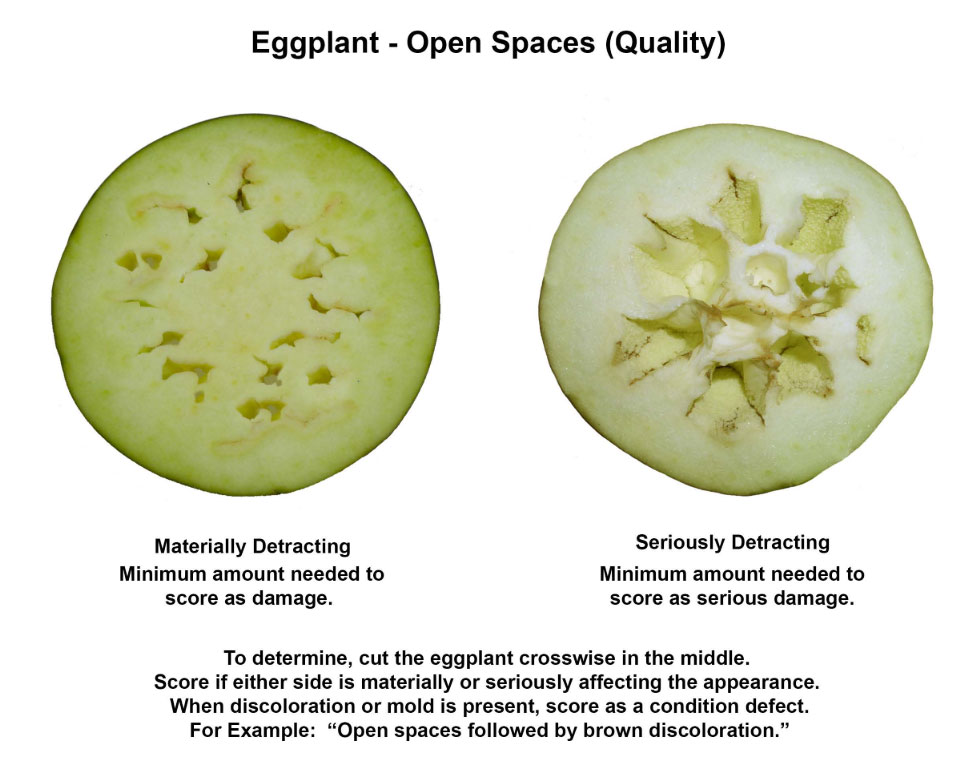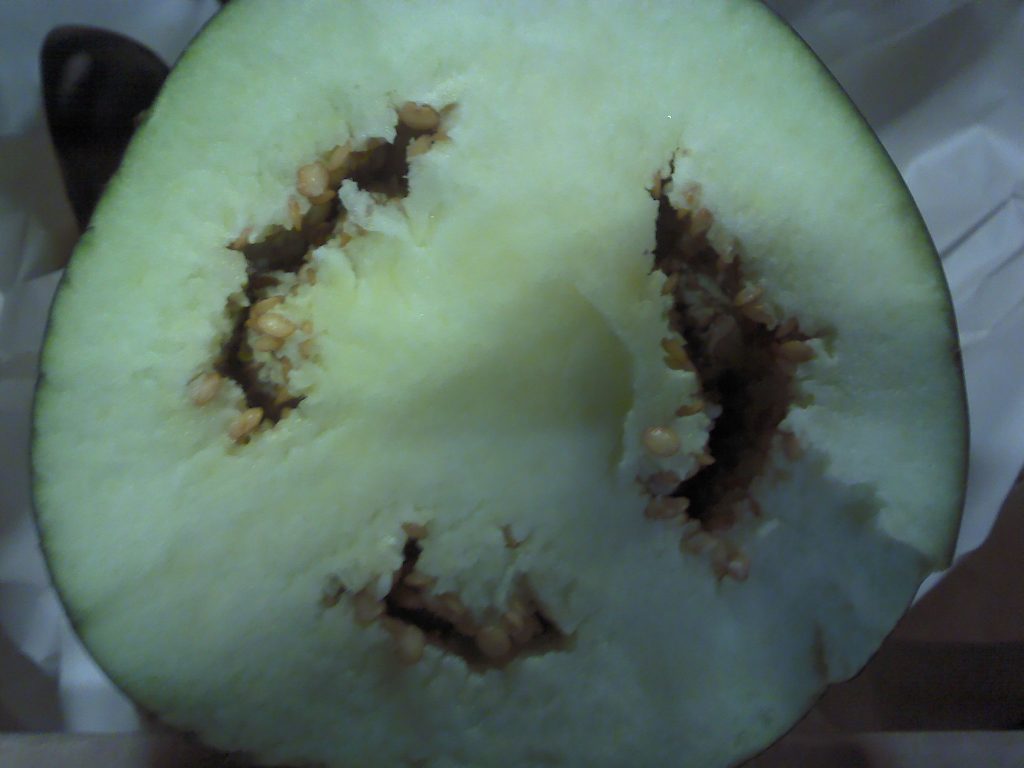I can’t say this is a common defect that I’ve encountered over the years, but the USDA must have thought it was worth developing a new visual aid for this defect.

The US Grade Standards nor the USDA Inspection Instructions do not mention this defect. It is normal practice to always cut some eggplant while inspecting to look for internal discoloration. I would cut the eggplant lengthwise to look for internal discoloration but the USDA suggest cutting the eggplant crosswise if this defect is suspected.
If found, it is not a free from defect, meaning you allowed to have some amount of open spaces before scoring as a defect. The USDA seems to be very generous in their scoring guideline, as the open spaces pictured above, on the left is a defect, but any amount less would be in grade.
The image on the right, as bad as that looks, would be scored as serious damage, and any amount less would only be scored as damage.
The USDA does not mention how this defect would be scored if discoloration or mold was found in the open spaces, only that the defect would be considered a condition defect. It is safe to say, if mold was found within the open spaces I would surely treat it as a free from defect; meaning, if I find open spaces, with mold growth, I would score it as a defect, damage by open spaces followed by mold growth.
If I found discoloration associated with the open spaces I would be more strict as to what is shown above, as to how much open space with discoloration would be acceptable.

Here is an example of the open spaces followed by discoloration. This would be scored as “serious damage by open spaces followed by discoloration,” a condition defect….meaning the discoloration will progress and become worse.

No Comments on “Eggplant- Open Spaces”